#Digital flashcards
Text
How to Use Graphics in Microlearning to Enhance Learning

Microlearning is a powerful educational strategy that delivers information in small, manageable chunks, making it easier for learners to absorb and retain knowledge. Graphics play a crucial role in enhancing microlearning by making content more engaging, accessible, and memorable. Effective use of graphics can transform complex information into easily digestible visuals, facilitate better understanding, and promote active learning. Here’s a comprehensive guide on how to use graphics in microlearning to enhance learning.
1. Simplify Complex Information
Graphics can simplify complex information, making it easier for learners to understand and remember. When dealing with intricate concepts or data, visual representations like diagrams, charts, and infographics can break down information into more digestible parts.
Infographics: Use infographics to combine text and visuals, providing a clear and concise overview of complex topics. Infographics are particularly effective in presenting data, processes, and comparisons. For instance, an infographic about the benefits of a new software tool can visually highlight its features, advantages, and usage statistics, making the information more accessible and engaging.
Flowcharts: Flowcharts are excellent for illustrating processes and workflows. They provide a step-by-step visual guide that can help learners understand sequences and relationships between different stages of a process. For example, a flowchart showing the steps of a customer service protocol can guide employees through each stage, from initial contact to resolution.
Diagrams and Models: Use diagrams to represent structures, systems, or concepts. For instance, a Venn diagram can effectively illustrate overlapping areas of two related concepts, while a model of a cell can help biology students visualize its components and functions.
2. Enhance Retention and Recall
Graphics enhance retention and recall by leveraging the brain's natural preference for visual information. Visual aids can help learners encode information more effectively, leading to better memory retention.
Mind Maps: Mind maps visually organize information around a central concept, showing the relationships between different ideas. This technique is useful for brainstorming sessions, summarizing lessons, or revising topics. A mind map about a historical event, for example, can connect key dates, figures, and outcomes, helping learners see the big picture and remember details.
Mnemonic Graphics: Use mnemonic graphics to create visual memory aids. Mnemonics are tools that help learners recall information through associations. For example, a graphic that uses the acronym "HOMES" to remember the Great Lakes (Huron, Ontario, Michigan, Erie, Superior) can be a fun and effective learning aid.
Flashcards: Digital flashcards with graphics can enhance vocabulary learning, language acquisition, and other memory-based tasks. Each flashcard can display an image along with a term or definition, making it easier for learners to create mental associations.
3. Engage Learners Actively
Active engagement is crucial for effective learning. Interactive graphics can transform passive learning experiences into active ones, encouraging learners to participate and interact with the content.
Interactive Infographics: Create interactive infographics that learners can explore by clicking on different sections to reveal more information. This approach allows learners to engage with the content at their own pace, diving deeper into areas of interest.
Simulations and Virtual Labs: Use graphics to create simulations and virtual labs that replicate real-world scenarios. These interactive environments enable learners to practice skills and apply knowledge in a safe, controlled setting. For example, a virtual lab for chemistry students can simulate experiments, allowing them to mix chemicals and observe reactions without the risks associated with physical labs.
Clickable Diagrams: Incorporate clickable diagrams that provide additional details when learners hover over or click on specific parts. This technique is useful for exploring detailed systems, such as the human body or machinery, where learners can click on different components to learn more about their functions.
4. Support Diverse Learning Styles
Different learners have different preferences and strengths. Some may be visual learners who benefit greatly from graphics, while others might prefer textual or auditory information. Using a variety of graphics can cater to these diverse learning styles.
Visual Summaries: Provide visual summaries of key points at the end of each microlearning module. These can include bullet points, icons, and illustrations that encapsulate the main ideas. Visual summaries help visual learners quickly grasp the core concepts and serve as a handy reference.
Video Content: Integrate videos with graphical elements such as animations, subtitles, and on-screen text. Videos can combine auditory and visual learning, making them effective for learners who benefit from seeing and hearing information simultaneously. For example, an instructional video on CPR can show animated sequences of the procedure along with audio explanations.
Graphical Storytelling: Use graphics to tell stories that illustrate concepts and scenarios. Storytelling is a powerful tool for making information relatable and memorable. For instance, a graphic story about a company’s journey to achieve sustainability goals can engage learners and provide a narrative context for the information.
5. Facilitate Quick Understanding
In microlearning, time is of the essence. Graphics can convey information quickly and effectively, ensuring that learners grasp the key points without feeling overwhelmed.
Icons and Symbols: Use icons and symbols to represent concepts, actions, and categories. Icons are universally recognized and can quickly convey meaning without the need for lengthy explanations. For example, a series of icons can represent different stages of a project lifecycle, such as planning, execution, and evaluation.
Charts and Graphs: Incorporate charts and graphs to present numerical data and trends. Visualizing data helps learners understand patterns and relationships at a glance. A bar chart showing sales performance across different regions, for example, can quickly highlight areas of success and those needing improvement.
Annotated Images: Use annotated images to highlight and explain specific parts of a visual. An annotated image of a complex machine can label and describe each component, helping learners understand its structure and function quickly.
Best Practices for Using Graphics in Microlearning
To maximize the effectiveness of graphics in microlearning, consider the following best practices:
Keep It Simple: Avoid cluttering your graphics with too much information. Focus on clarity and simplicity to ensure that the visuals are easy to understand.
Consistency: Maintain a consistent style, color scheme, and typography throughout your graphics to create a cohesive learning experience.
Relevance: Ensure that all graphics are directly related to the content and learning objectives. Irrelevant or decorative graphics can distract learners and reduce the effectiveness of the lesson.
Accessibility: Make sure your graphics are accessible to all learners, including those with visual impairments. Use high-contrast colors, alt text for images, and ensure compatibility with screen readers.
Feedback: Gather feedback from learners on the effectiveness of your graphics and make improvements based on their input. Continuous refinement will help you create more effective learning materials.
Conclusion
Graphics are a powerful tool in microlearning, capable of enhancing engagement, simplifying complex information, and supporting diverse learning styles. By integrating well-designed visuals into your microlearning modules, you can create a more effective and enjoyable learning experience. Whether through infographics, interactive elements, or visual summaries, the thoughtful use of graphics can significantly enhance the impact of your microlearning efforts.
#Microlearning#Graphics in education#Visual learning#Infographics#Flowcharts#Diagrams#Interactive content#Learning retention#Active learning#Simplifying complex information#Memory aids#Mnemonic graphics#Digital flashcards#Interactive infographics#Simulations#Virtual labs#Clickable diagrams#Diverse learning styles#Visual summaries#Instructional videos#Graphical storytelling#Quick understanding#Icons and symbols#Charts and graphs#Annotated images#Educational technology#Visual aids#Learning engagement#E-learning#Learning preferences
0 notes
Text
I Grade Ed Improves Student Productivity in Us
IGrade ed is a revolutionary AI tool on the Cloud. AI writing tool, assignment management tool to manage the projects you create with AI and many more.
#AIproductivitysoftware#research#students#teachers#co-workers#Interactive Study Tool#digital flashcards#encyclopedia#school#work#Study Tool#AI software#academic success#study material#study#AI Tutor#Content Rewriter#Assignment#Study Planner#Task Management#Collaboration and Teamwork
1 note
·
View note
Text
Got a question for y'all
So I'm working on this little flashcard project, and I know I've barely explained it - essentially I've made a playlist full of songs that remind me of logan angst, and I'm going to create a few simple frames to animate based on some lyrics from each song, like a tiny sampler for each one
However, I'm a little stuck on deciding whether to do a couple frames animatic-style or to just do stylized lyrics within the drawing
So, let me use this for an example:
This one is a simple 2-frame, animatic-style, very minimal animation work at all, nothing complex
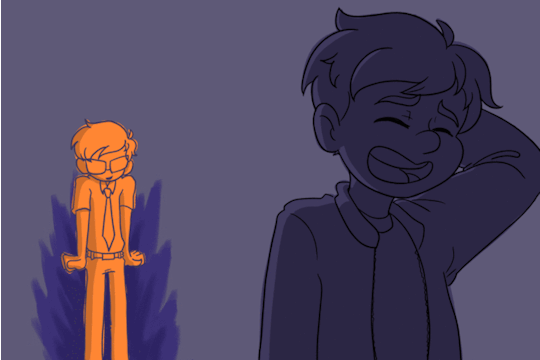
And this one is a simple frame with stylized lyrics added into the frame, also very easy because the lyrics are the only part that's really going to be animated
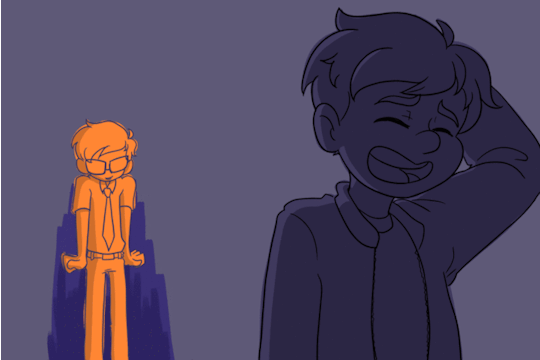
I have to keep it simple regardless because there's a lot of songs on the playlist (so much so that I had to make a second, extended version of the playlist to keep myself in check) but I'm curious what you all might prefer to see...
Just let me know what you think!
#even if i do end up doing the lyrics one i will likely still add tiny pieces of animation anyway for certain frames#but i just cant pick between the two right now so im curious what others may think instead#logan angst#I've been calling it the flashcard project bc i originally draw it on flashcards then upload it and draw over that digitally#so that i can animate it#if that makes sense#sanders sides#poll#uhhh#oh btw spoiler i guess but the example is something im working on for the song Mind by Talking Heads from the playlist#so yeah#orbs thought bubbles
72 notes
·
View notes
Text
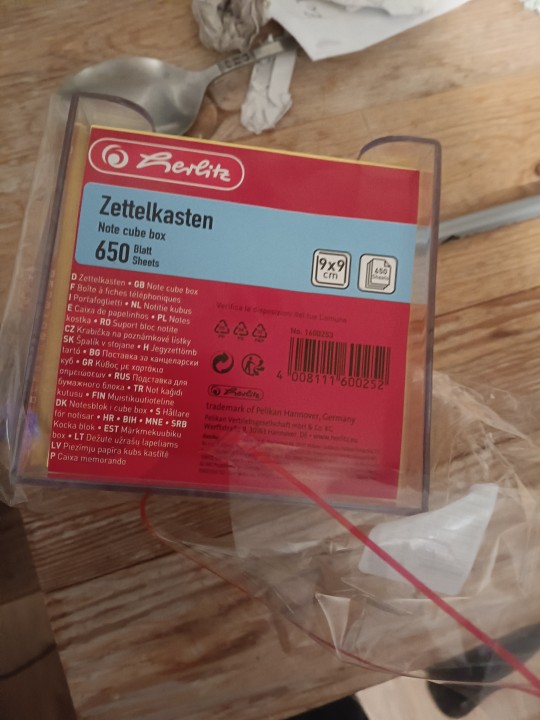
I assume these are called that because they are indeed notes that are in a box but I did not expect to see the word in the wild
#emotional support zettelkasten#will be using them as flashcards & not for the actual zk because digital is better#but still made me smile
8 notes
·
View notes
Text
🤩flash card? Students, university students, teachers, employees and even managers can use this flash card. 📒📒📒 Useful and simple.🙃 Very simple for everyone.😎 The design of this flash card is double. 🤓 100 double sided digital flash card hyperlinks. 💯 A total of 202 pages. Buy now with a 40% discount.🎉🎉🎉😲😲😲
📌https://etsy.me/3ahRaMl
📌https://etsy.me/3ahRaMl



#digital planner#stickers#design#digitalsticker#goodnotes#graphic design#ipad planner#weekly#trackers#daily planners#flashcards#digital paper#double page spread#goodnotes5
17 notes
·
View notes
Text

I think I have enough index cards to see me through my next exam :3
#studyblr#studying#comptia#op#personal#flashcards my beloved#“why don't you just use digital ones?”#well i dont always want to be picking up my phone (in part cuz it's heavy and strains my hands)#and it's also full of potential distractions#also I enjoy being creative and prettyfying the cards it helps me remember the content
1 note
·
View note
Text
***New*** IN MY PRINT SHOP: Pink Bible Scripture Journal Index Cards. I designed these to be pretty but simple with the typerwriter font. They can be used in your junk journal or they can be used to memorize scriptures. They are good for grandmas because the print is big. CHECK THEM OUT. Don't forget, after purchase it is a downloadable file that you print. The great thing about this is you print and they are ready for your use. Coming soon a more masculine set of scripture cards for the guys.
#digital scrapbooking#junk journal#scripture study#bible verse#bible study cards#scripture cards#scripture flashcards#bible ephemera
0 notes
Text
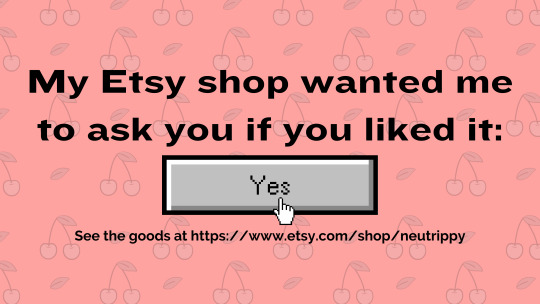
#etsy#etsy seller#etsy shop#advertising#shameless advertising#neutrippy#coloring books#decorative papers#digital papers#fantasy#anarchy#anarchy flashcards
0 notes
Text
Study Break ✧.*

paige bueckers x college student! reader
warnings: making out, public sex (very much so), fingering, throat fucking,
word count: 1.6k
a/n: honestly one of my shorter ffs but it is what it is lol, also this is just a song rec but it’s also kind of similar to the plot I guess. It’s one of my favs
You stare out of the library’s window, tapping your pen to the table. Summer school just brings another level of boredom, you are dying to go outside and lay in the grass with your friends. It was golden hour, and everything just looked prettier outside. “Y/n, I brought you your iced coffee.”, your best friend Clara had said to you, snapping you out of your daze.
You are both studying for the first session of summer school finals, and have been taking turns bringing each other drinks. Whether it was red bull, coffee, monster or highly caffeinated tea, you both were locking in this entire week. Sure, your digestive systems were suffering the consequences, you just needed to finish off this session strong. You sip your coffee and flip through your digital flashcards when you were interrupted.
“Hey, uh the library is super packed here and you both have an extra two seats at your table, is it chill if we sit here?”, said an extremely tall blonde woman stood in front of you. She was wearing a white crop top and some cargo pants with her iPad in hand, and standing behind her was another girl you didn’t know. They looked familiar but you couldn’t put your finger on it.
“No, yeah of course you can sit, we don’t mind.”, Clara said, because you just were staring up at the girl who had asked you. You couldn’t help it, you felt drawn to her pretty blue eyes. You nod aggressively, now embarrassed at the fact that your friend had to answer for you. “Yeah-, yeah of course, I’m sorry.”, you start, motioning to the empty energy drinks in front of you. “My mind is definitely somewhere else today, sorry about that.”, you continue to defend yourself.
“Nah, you’re good ma don’t worry about it. Thanks.”, is all the blonde says to you. You couldn’t help but to sneak a few glances at her. You felt your phone buzz, and you check it.
**Clara Bear**
are you gonna study for organic chem or are you going to continue to stare at Paige Bueckers?
I get it’s pride month, but its also FINALS?
That’s when you realized, they were basketball players at your school. You internally face palm, Paige must think you’re just another one of her fans. You look up at her, and catch her eyes this time.
“So, girl who keeps looking over at me. What’s your name?”, Paige says, keeping her voice low and pushing her chair closer to you, since you are in the library. “Ah, it’s Y/n.”, you say, avoiding her gaze. “Does Y/n know my name perhaps?”, she says, closing your laptop - trying to get your full attention. “Mhm, it’s Paige, you play basketball don’t you?”, you say back, trying not to seem like a fan. It’s not like you were, you didn’t even know her until Clara texted you, you’ve seen her in ads and stuff at your university but nothing like being her fan.
“So uh, me and Y/n will be back. Study break things.”, Paige says, back to her friend and Clara. Clara gives you a look, one that says “don’t get into any trouble” before blowing you a kiss. You scrunch your face and flip her off, giggling. Your best friend knows you too much.
After following Paige out of the library and onto a hill in the field outside, you are finally able to breathe. The air has gotten crisp since the sun is going down, and you take a picture of the sky to capture the moment. Paige is quiet, also enjoying the fresh air. Before you know it, Paige pulls you onto the ground with her and the two of you roll down the hill together. It was calming almost, to have such a release, you felt all the stress that has built up these past few weeks from school leave your body as you laugh along with Paige. When you reach the bottom of the hill, you were laying in the grass, inches away from her face.
Paige’s blue eyes looked back into yours, before looking down at your lips and back to your eyes. Your breathing shortens, you’ve never even been this close to a girl before. Yes, you know you’re as gay as it comes but doesn’t mean you have had any experience. You spent all your time either studying or with your best friend, too scared to venture into the world of dating more or less kissing pretty girls you’ve just met. But you give in, give into the space between the two of you and your heart is beating out of your chest as Paige connects her lips with yours. The sky is a deep pink and purple colour as the sun sets, and Paige snakes her arm around your waist, under your shirt. You find it difficult to stop, to remove your lips from hers. She pulls away, leaving a string of saliva connecting your lips together still. She doesn’t stop smiling at you and move, straddling her whilst she is still laying down in the grass and kiss her again. Between kisses, you ask, “this okay?”, and Paige reaches up and holds the side of your face, pulling you as close to her as she can.
Before you know it, Paige is holding your hand and dragging you back into the library, but into the top floor, the farthest set of bookshelves from the door. She pushes you against the bookshelf and begins to kiss your neck. Her hand glides under your shirt, against your stomach and soon finds the clasp of your bra and undoes it easily. Like she’s done it a million of times. Her lips don’t leave your collarbones and Paige lifts your up onto the ledge in front of the window. Your back presses against the glass and your legs wrap around her torso, pulling her close into you. From the smell of her perfume and the taste of her sweet sweet lip gloss, you can’t help but take everything in. Paige undoes her ponytail, letting her hair fall down onto her shoulders and looks down at you. “You haven’t had much to say ma, is this alright with you?”, she asks you, gently. You nod, knowing that whatever is about to happen is what you want. Looking up at her, you bring your hand to the back of her neck and she kisses you with as much desperation as you have. She separates you, only for a moment to replace her lips that were against with yours with two of her fingers.
You suck against them, the two long digits she has in your mouth, looking into her eyes. You can’t help but bring your hand down and rub your clit through your shorts. You moan against her fingers and she uses her free hand to move your hand that’s pleasing yourself and brings you down from the ledge to replace it with her knee. She starts to fuck your throat with her fingers and you are impatiently rubbing yourself against her knee. You close your eyes, to take in all the pleasure you are feeling when Paige whispers into your ear, “I’m going to need you to look at me sweetheart.”, and your eyes meet hers and you almost finish at the sight. She is looking at you like you’re worth risking everything to be caught in the library. She holds your waist with her free hand to stop you and you let out a loud whine and you are quick to cover your mouth. You didn’t even know you could make such noises and you start to feel the anxiety of getting caught. But somehow, it was making you even more needy and you didn’t want to stop. Paige slides her two wet fingers into your shorts, pushing aside your underwear and rubbing your clit gently. You don’t even have time to be embarrassed by how soaked your underwear was. You wrap your arms around the back of her neck and rest your head on her shoulder, moaning quietly as she takes her time to please you. “Paige please…”, is all you can say before she slides both fingers into your drenched cunt.
“You’re such a good slut for me, taking two of my fingers ma…. can you take three?”, she asks, her voice quiet enough for just you to hear. You moan in response, but that’s not good enough for Paige. “Use your words, or I will have to stop.”, she tells you.
“Please, I can take one more just put it in please.”, you say, trying your best to be clear and not make any other lewd sounds.
Paige slides a third finger into you and you rock your hips against her hand that’s place on her knee, so you could feel her fingers go deeper into you. Struggling to keep quiet, you suck on Paiges neck and you feel yourself get closer. You pill your lips away from the blondes neck, not mentioning how deep red the pretty bruise you left on her neck were. “Paige please.”, is all you say before giving her a look. “You can finish whenever you’d like sweetheart.”, she tells you and you move your hips faster as Paige shoves her fingers into you deeper and suddenly your gasping out for air as you cum all over her fingers and knee.
You take a few seconds to catch your breath and Paige sucks on her fingers quietly.
“You taste so good, we are definitely going to have to do this again sometime soon please.”, Paige tells you, and you look up at her and before you know it you’re reaching for her chin and kissing her.
“I’d like that.”, is all you say before standing up. You end up going to the bathroom to clean up the mess you made on Paige’s pants though she insisted she could do it herself.
Maybe this could be more than just a study distraction. Maybe she could be something more.
#uconn wbb#uconn women’s basketball#paige bueckers#paige buckets#paige bueckers smut#paige bueckers x reader#uconn huskies#Spotify
331 notes
·
View notes
Text
thinking about how many flashcards i used to make in high school and how much i should start making them again.
#i rlly peaked in high school#no but it takes so much effort 😫😫#also digital flashcards or physical flashcards???
1 note
·
View note
Text
How to Study like Rory Gilmore


A guide on romanticising school, studying like Rory Gilmore, and effective study methods. <3
Create a schedule. Rory is well-known for her strict schedule and commitment to sticking to it. To study like Rory, you should first make a timetable outlining your study time, reading time, and free time. Include breaks in your schedule and follow it as strictly as possible! :)
Lots of reading. Rory is an avid reader who always carries a book with her. Pick books that interest you and make reading a daily habit. Reading will help you develop your vocabulary and critical thinking skills.
Take notes. Rory is well-known for her detailed notes and ability to retain information. Take notes in class and annotate your books. Make your notes more structured by using highlighters and different colours, and review them daily. (goodnotes and notion are great for digital note taking!)
Make use of flashcards. Rory memorises stuff through flashcards. Flashcards can be used for vocabulary terms, key concepts, and other relevant information. Use them to test yourself and review regularly.
Define your goals. Rory has a set goal, what are you working towards? Make a vision board, write down your goals, visualize. This will help you stay motivated and not loose focus!
Stay organised. Rory is well-organised, and her study space is always neat and tidy. Keep your study area nice and free from distractions. Use folders, binders, and other tools to keep your notes and supplies organised, and make sure your workspace is clean and clutter-free.
Seek help when needed. Rory is not afraid to ask for help when she needs it. Don't hesitate to ask for help from your teachers, tutors, or classmates if you need it. To enhance your learning, ask questions and seek out extra resources such as textbooks, youtube videos, and study guides.
Atmosphere. Don't forget to make the atmosphere cosy, light a candle, prepare yourself a cup of tea or coffee, and wear a comfy sweater. Create an environment in which you can stay focused for hours. <3
Studying like Rory Gilmore requires dedication, discipline, and a love for learning. By following these tips and strategies, you can create a study routine that works for you and helps you achieve your academic goals.
As always, Please feel free to add more suggestions or questions in the comments!
✩‧₊*:・love ya ・:*₊‧✩
#aesthetic#coquette#dream girl#girl blogger#it girl#pink blog#that girl#malusokay#pinterest#rory gilmore#gilmore girls#study aesthetic#study blog#romantizing school#coquettecore#it girl energy#girl blogging
3K notes
·
View notes
Text
Using Retrieval Practice to Get the Most Out of Microlearning

In the evolving landscape of education and corporate training, microlearning has emerged as a revolutionary approach. It involves delivering training content in small, manageable chunks that learners can easily absorb and apply. However, to maximize the effectiveness of microlearning, integrating retrieval practice is essential. This article delves into how retrieval practice can enhance microlearning and help organizations achieve their training objectives.
What is Retrieval Practice?
Retrieval practice is a learning strategy that involves recalling information from memory, rather than simply re-reading or re-watching content. This active recall process strengthens memory and improves the ability to retrieve information in the future. It’s a well-researched method that has proven to enhance long-term retention and understanding of material.
The Science Behind Retrieval Practice
When learners engage in retrieval practice, they are effectively exercising their memory. This process helps to reinforce neural connections related to the recalled information, making it easier to retrieve the same information later. By continuously practicing retrieval, learners can build stronger and more durable memories. Studies have shown that retrieval practice is more effective than passive review methods, such as reading or listening to content repeatedly.
Microlearning and Retrieval Practice: A Perfect Match
Microlearning and retrieval practice complement each other exceptionally well. Microlearning’s bite-sized approach ensures that content is not overwhelming, making it easier for learners to engage in frequent retrieval practice. Here’s how combining the two can lead to optimal learning outcomes:
Increased Engagement: Microlearning modules are typically short and focused, which naturally leads to more frequent opportunities for retrieval practice. This increased engagement helps learners stay active and involved in the learning process.
Enhanced Retention: Retrieval practice boosts retention by requiring learners to actively recall information. When paired with microlearning, which emphasizes concise and targeted content, this leads to better retention of key concepts and skills.
Better Knowledge Application: Frequent retrieval practice helps learners transfer knowledge from short-term to long-term memory, making it easier to apply what they’ve learned in real-world situations. Microlearning’s practical and applied approach further reinforces this application.
Implementing Retrieval Practice in Microlearning
To effectively integrate retrieval practice into microlearning, consider the following strategies:
Frequent Quizzes: Incorporate short quizzes at the end of each microlearning module. These quizzes should focus on recalling key points from the lesson rather than just recognizing them.
Spaced Repetition: Use spaced repetition techniques to schedule retrieval practice sessions over increasing intervals. This approach helps reinforce learning over time and improves long-term retention.
Interactive Flashcards: Utilize flashcards that prompt learners to recall information actively. Digital flashcard apps can be especially useful, allowing learners to engage in retrieval practice on the go.
Scenario-Based Questions: Develop scenario-based questions that require learners to apply what they’ve learned to real-world situations. This not only aids in retrieval practice but also enhances problem-solving skills.
Reflection Prompts: Encourage learners to reflect on what they’ve learned by writing summaries or discussing key points with peers. This form of active recall helps consolidate learning.
Case Study: A Corporate Training Success
Consider a multinational company aiming to improve its sales team’s product knowledge and customer interaction skills. The traditional training methods were time-consuming and often ineffective in ensuring long-term retention. By integrating retrieval practice into their microlearning strategy, the company achieved remarkable results.
Customized Microlearning Modules: The company developed short, targeted modules focusing on specific product features, customer interaction techniques, and sales strategies.
Frequent Assessments: Each module ended with a quiz that required employees to recall and apply the information they had just learned. These assessments were designed to challenge their memory and reinforce key concepts.
Spaced Repetition: The company used spaced repetition to schedule follow-up quizzes and refresher modules. This helped ensure that employees revisited important information over time, leading to better retention.
Interactive Tools: The training program included interactive flashcards and scenario-based questions that encouraged employees to engage in active recall regularly.
Collaborative Reflection: Employees were encouraged to discuss their learning experiences and share insights with their peers. This reflective practice further reinforced their understanding and application of the material.
The results were impressive. Employees demonstrated significantly improved product knowledge, better customer interaction skills, and increased sales performance. The combination of microlearning and retrieval practice proved to be a powerful strategy for achieving these outcomes.
Benefits of Using Retrieval Practice in Microlearning
Improved Memory Retention: Retrieval practice helps solidify learning by strengthening neural connections, leading to better long-term memory retention.
Increased Learner Engagement: The active nature of retrieval practice keeps learners engaged and motivated, as they are constantly challenged to recall and apply information.
Enhanced Problem-Solving Skills: By incorporating scenario-based questions, learners develop critical thinking and problem-solving skills that are essential for real-world applications.
Greater Knowledge Transfer: Retrieval practice facilitates the transfer of knowledge from theoretical understanding to practical application, making it easier for learners to use what they’ve learned in their jobs.
Continuous Improvement: Regularly scheduled retrieval practice sessions ensure that learning is an ongoing process, leading to continuous improvement and skill development.
Challenges and Solutions
While the benefits of combining retrieval practice with microlearning are clear, there can be challenges in implementation. Here are some common obstacles and potential solutions:
Resistance to Change: Employees accustomed to traditional training methods may resist the shift to microlearning and retrieval practice. Solution: Communicate the benefits clearly and provide support during the transition.
Time Constraints: Finding time for regular retrieval practice can be challenging in busy work environments. Solution: Integrate microlearning modules and retrieval practice into daily routines, making them short and accessible.
Ensuring Engagement: Keeping learners engaged with frequent retrieval practice can be difficult. Solution: Use a variety of interactive tools, such as quizzes, flashcards, and scenario-based questions, to maintain interest.
Measuring Effectiveness: Tracking the impact of retrieval practice on learning outcomes can be complex. Solution: Use analytics tools to monitor progress and gather feedback to continuously improve the training program.
Conclusion
Retrieval practice is a powerful learning strategy that can significantly enhance the effectiveness of microlearning. By encouraging active recall and application of knowledge, retrieval practice helps learners retain information longer and apply it more effectively in real-world scenarios. For organizations looking to improve their training programs, integrating retrieval practice into microlearning can lead to better engagement, retention, and overall performance. Embrace this approach to unlock the full potential of your employee training and development initiatives.
#Retrieval practice#Microlearning#Employee training#Online learning#Knowledge retention#Active recall#Learning strategy#Memory enhancement#Corporate training#Training effectiveness#Bite-sized learning#Spaced repetition#Interactive flashcards#Scenario-based learning#Reflective practice#Learner engagement#Problem-solving skills#Knowledge application#Training assessments#Continuous improvement#Training modules#Customized learning#Learning outcomes#Quiz-based learning#Training analytics#Learning retention#Training innovation#Digital learning tools#Training customization#Employee development
0 notes
Text


i love using flashcards (digital or physical) to study for fact-heavy subjects. absolute game changer. ✨
#studyblr#university#study motivation#light academia#studyinspo#studying#study notes#coffee academia#note taking#loudemic’s study tipps
495 notes
·
View notes
Text
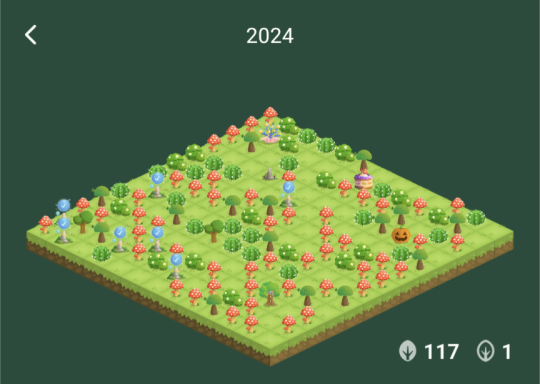
[ID: A screengrab of an app, with the heading "2024"; beneath the heading is an image of a grid decorated to look like a grassy field, covered with little digital plants such as trees, cacti, and toadstools. In the corner is a count of the plants, 117, and also the number one to indicate one real tree has been planted.]
Duolingo, for all its faults, has been really helpful for learning Italian, because it gamifies it exactly at the level I want. But it's also stalled in terms of what it can teach me; I've completed all the modules and it has started to become simply repetitive drilling. I decided I'd go off the paid subscription when the year is up, because I can do flashcards and translation on my own, and I wanted to find new ways to gamify that so that I would keep at it.
Enter Forest! When you want to focus on something, you open the app, set the amount of time you want to focus, and "plant" the timer. It basically locks your phone to a handful of apps (you can select which ones) so that you either have to focus outside of your phone, or focus on the apps you've allowed. If you successfully spend the entire time without "cancelling" the plant, it gets added to the grid. It also awards you coins which you can use to buy new kinds of plants, but slowly enough that you have to work a little for them. There's also a "friends" function where you can friend and compete with others, although I haven't explored that yet.
For me it's useful because it locks me out of stuff I shouldn't deal with while I'm studying, preventing me from, for example, feeling guilty that I haven't responded to a text immediately. It also gives me a little dopamine hit when my plant grows successfully, and unlike some other apps I looked at, once your plant has grown, you don't have to do anything further -- there's no maintenance, per se, which keeps it from getting overwhelming. It's primarily useful to me as a way of rewarding myself for doing something daily, which I will need once I'm not getting night owl chests and streak rewards from Duolingo. I've been on Forest long enough now that I know it'll work for me so I thought I'd recommend it.
Forest has a free version, but a lot of the features I wanted (custom tags, the ability to create a library of favorite settings, etc) were only in the paid version. That was a bummer until I looked at the cost of the paid version which was literally a one-time payment of $3. So I paid the $3 and honestly, more than worth it.
I use it for everything from locking me down while I'm doing my ADHD video game to timing how long I spend on writing and crafts to rewarding myself for doing my Italian lessons and breathing meditation.
206 notes
·
View notes
Text


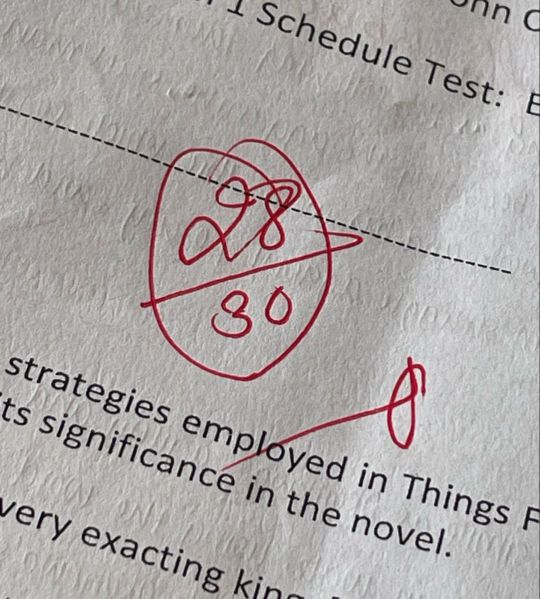
flashcards
flashcards are a study tool that aids in memorization. they typically consist of a card bearing information on both sides, with a question or definition on one side and the answer or term on the other. flashcards can be used for various subjects, such as vocabulary, historical dates or formulae, and are effective because they involve active learning through self-testing and spaced repetition. they can be created physically with paper and pen or digitally using software.
here are some tips to create flashcards that are effective and engaging:
phrase your flashcards as questions: instead of simply writing a term or concept, phrase it as a question. this encourages active recall, which is more effective for memory retention.
use the specification: refer to your exam boards specification or past exam papers to ensure your flashcards cover the necessary material and help with exam technique.
one idea, one flashcard: keep your flashcards simple. each should contain one question and one answer. this makes it easier for your brain to process and remember the information.
engaging questions: write questions that are interesting and thought-provoking. avoid one-word answers; instead, aim for answers that make you think about the topic in depth.
regular review: use your flashcards regularly and shuff them often to avoid simply memorizing the order. spaced repetition is the key to long-term retention.
personally, i don't enjoy using flashcards so i'd like to add that everyone is very different and we all learn and enjoy various things. what works for someone online may not work for you. you just have to try and find out.
i hope you find the post helpful.
❤️ joanne
#elonomh#student#elonomhblog#student life#academia#chaotic academia#productivity#study blog#that girl#becoming that girl#studyblr#studying#studyblr community#study motivation#study aesthetic#studyspo#flashcards#study technique#study techniques#advice#learning#romanticizing school#school
173 notes
·
View notes
Text
we should keep adding letters to the LGBT+ alphabet soup until cishet people need flashcards to memorise it like the digits of pi. and also tell them that they’re bad allies if they can’t rattle it all off at the drop of a hat. I just think it would be funny
299 notes
·
View notes